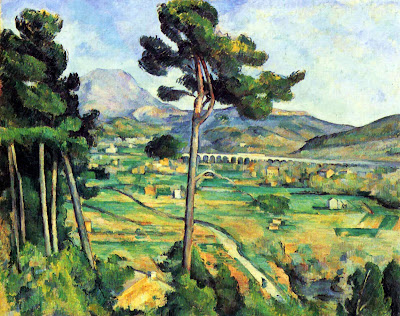Paul Sérusier, Le Talisman (1888): the lesson of Gauguin
Paul Sérusier,
Le Talisman, l’Aven au Bois d’Amour
The Talisman, The Aven at the Bois d’Amour. 1888
Oil on wood panel.
The Talisman, The Aven at the Bois d’Amour. 1888
Oil on wood panel.
h: 11 x w: 8 inches.
The lesson of Paul Gauguin to the young painter Paul Serusier in 1888 in Pont-Aven, Brittany, where Gauguin had settled in 1886, was stated as:
"Comment voyez vous cet arbre? Il est vert? Mettez donc du vert, le plus beau vert de votre palette - et cette ombre, plutôt bleue? Ne craignez pas de la peindre aussi bleue que possible."
"How do you see this tree? It is green? Use green then, use the most beautiful green in your palette - and this shadow, rather blue? Don't be afraid to paint it as blue as possible."
The small painting called The Talisman reported the lesson in a concrete form to Maurice Denis and the group that would be consolidated around him as Les Nabis (The Prophets). Denis would synthesize its central aesthetic concept in a famous statement:
"Se rappeler qu'un tableau - avant d'être un cheval de bataille, une femme nue, ou une quelconque anecdote – est essentiellement une surface plane recouverte de couleurs en un certain ordre assemblées."
"To remind oneself that a picture, before being a battle horse, a nude, or any other anecdote, is essentially a flat surface covered with colors assembled in a certain order."
Maurice Denis: 'Definition du neo-traditionism', Art et Critique, 1890. (available here)
"To remind oneself that a picture, before being a battle horse, a nude, or any other anecdote, is essentially a flat surface covered with colors assembled in a certain order."
Maurice Denis: 'Definition du neo-traditionism', Art et Critique, 1890. (available here)
Maurice Denis,
Jacob Wrestling with the Angel, ca. 1893.
Oil on canvas 48 x 36 cm
Jacob Wrestling with the Angel, ca. 1893.
Oil on canvas 48 x 36 cm




Comments